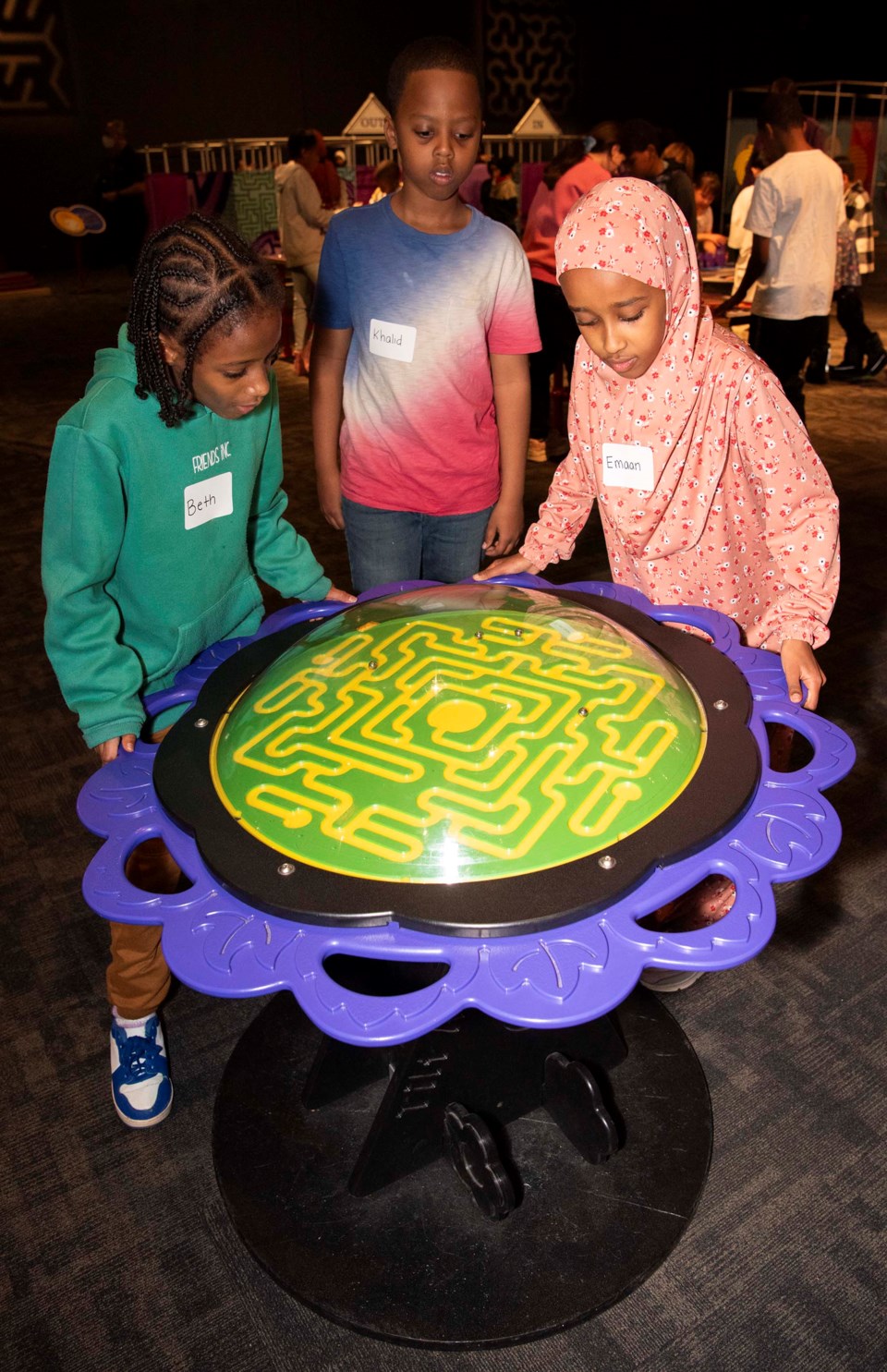St. Albert maze masters can puzzle over the latest brain games this winter as part of a new exhibit at Edmonton’s space and science centre.
Students from Edmonton’s Sifton School scrambled through mazes and pondered puzzle orbs on Oct. 26 during the opening of the Mazes and Brain Games exhibit at the Telus World of Science Edmonton. The travelling exhibit uses puzzles and mazes to teach guests about math, logic, and the mysteries of the mind.
“There’s so much science and math and logic in mazes and games,” said Trevor Prentice, director of science experience at the Telus World of Science, adding that they are great ways to teach persistence, logic, and creativity.
“The types of lessons that kids and adults or anyone can learn when they come here or when they play with any puzzle would translate over well into any science or anything in life.”
The exhibit features a wide range of puzzles for guests to try, including tavern puzzles (where you have to extract a ring from a tangle of twisted metal), an oversized Tower of Hanoi, and various Rubik’s cubes. There are finger mazes (where you trace a path through a maze following certain rules), rope mazes, rolling ball mazes, and two walk-through mazes, one full of playable instruments and the other stuffed with factoids about illusions.
“Some of these are surprisingly difficult and hard even though you can see the whole maze,” Prentice said of the finger mazes, as they pair twisty passages with irksome rules (such as “no right turns allowed”).
The exhibit also features illustrations by David Anson Russo, who is known for his intricate maze-themed art.
Popular puzzles
Mazes have been around for at least 4,000 years, and have been featured in coins, Roman pavement designs, and baskets, the exhibit reveals. The hedge maze started out in the Middle Ages as a way for rich landowners to keep wild animals out of their gardens. Labyrinths, such as the one at the St. Albert United Church, have long been used for contemplation and meditation. (A labyrinth has a single path that lead to its centre, while a maze has branching paths, Prentice explained.)
Researchers have long used mazes to study psychology and brain function in animals, Prentice said. Mazes are also an interesting mental challenge — you can solve many mazes with the left-hand or right-hand rule (where you follow one wall until you find the exit), but finding the quickest solution often requires some tricky math.
St. Albert’s Mission Fun and Games stocks a selection of puzzle-type games, said store manager Tim Relth. The ball-rolling maze games and brain puzzles tend to appeal to kids, and are popular stocking stuffers. Escape room games appeal to adults, who often want more story in their puzzles.
The Mazes and Brain Games exhibit runs until spring 2024. Visit telusworldofscienceedmonton.ca for details.




